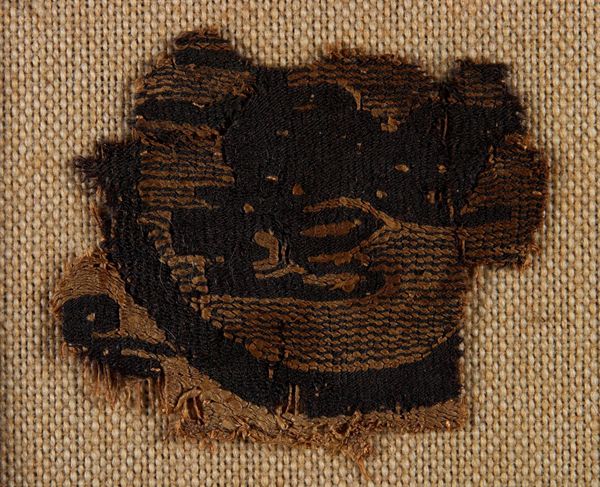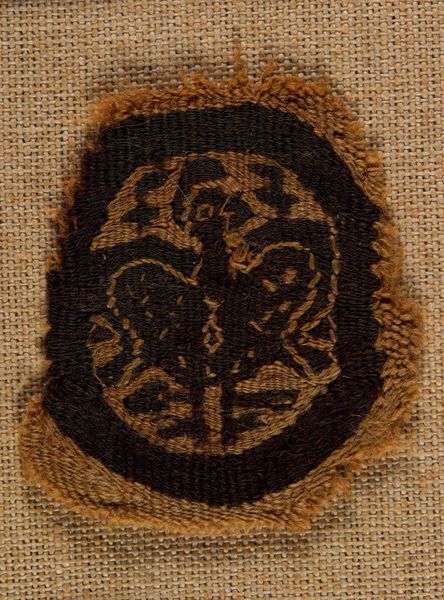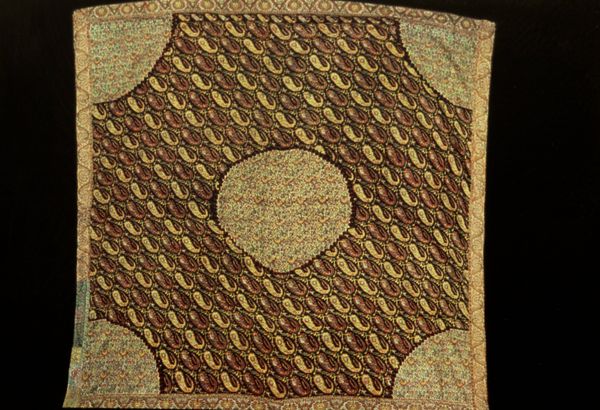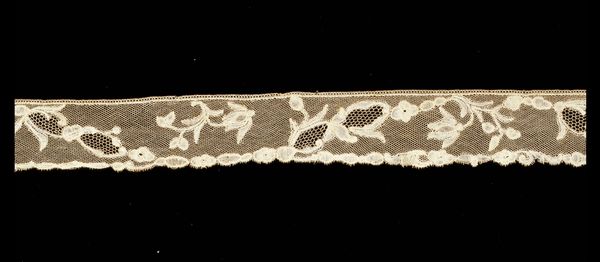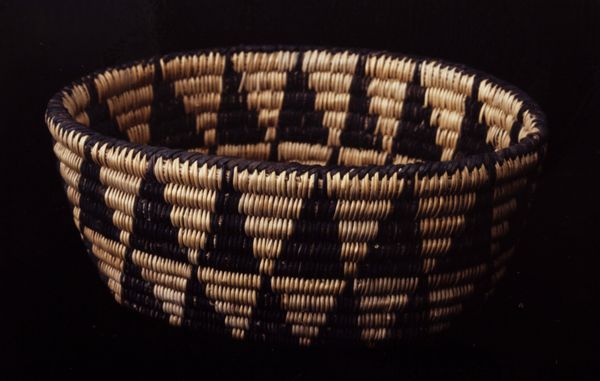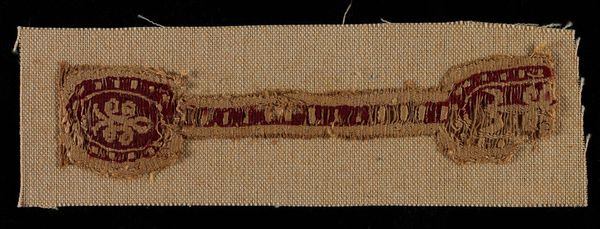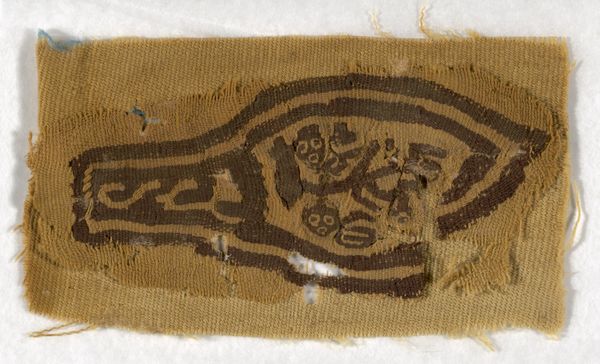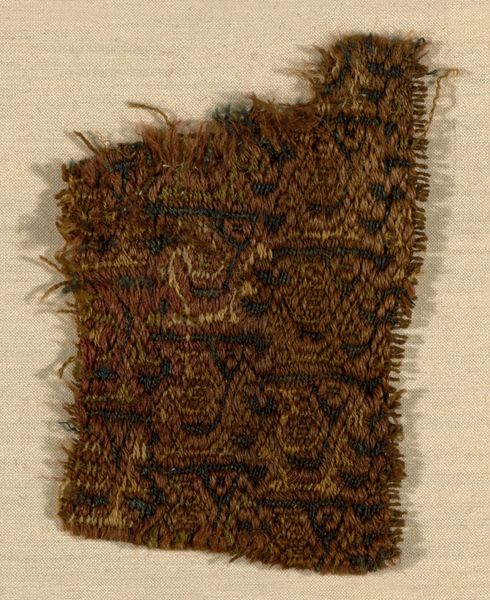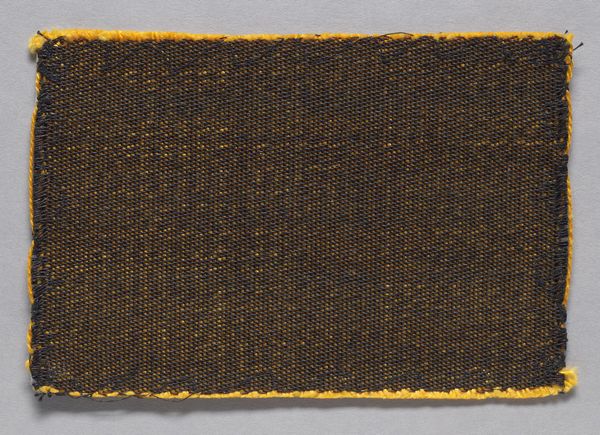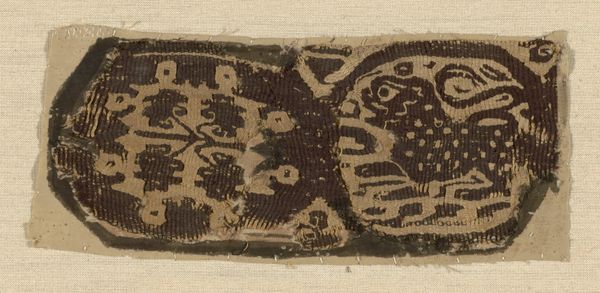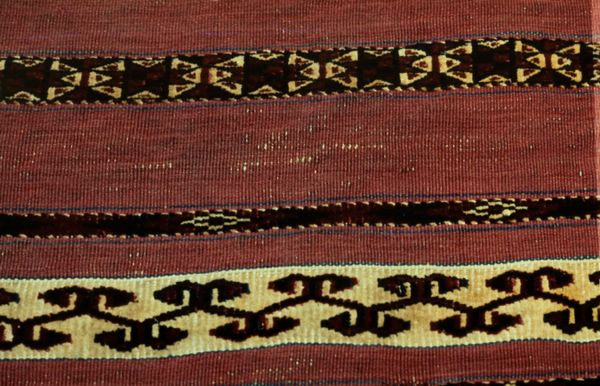
weaving, textile, wool
#
organic
#
weaving
#
textile
#
ancient-egyptian-art
#
wool
#
egypt
#
organic pattern
#
islamic-art
#
texture
Dimensions: 3 3/4 x 2 1/4 in. (9.53 x 5.72 cm) (fragment)4 1/2 x 3 7/16 in. (11.43 x 8.73 cm) (mount)
Copyright: Public Domain
Curator: This is a Textile Fragment of the Coptic variety from Egypt. We aren't certain when it was made, and it resides here at the Minneapolis Institute of Art. The primary material used is wool. Editor: It’s captivating how the pattern seems almost suspended against the stark backdrop of its support. You immediately see texture and material, age and loss, all in one glance. Curator: This fragment offers an invaluable glimpse into the fusion of Egyptian, Roman, and early Christian artistic traditions. It’s essential to contextualize these pieces within the broader historical narrative of cultural exchange. How does this woven object reflect gendered roles of textile production, and perhaps even encoded beliefs? Editor: I see that clearly! The very act of weaving – the labor, the repeated motions, the slow accretion of the image—speaks volumes. The fact that it's a fragment underscores its connection to utility; it *was* something, and that something involved work. You can imagine the weaver and her station. The process leaves a trace. Curator: Absolutely. Consider the potential socio-political implications—what status might be communicated through such intricate design and the materials themselves? Who had access to this skill, and who was denied? The organic shapes integrated in this art piece serve to understand nature as cultural artifact. Editor: You touch on something really crucial there; thinking of it simply as an object and process speaks so deeply of function but also speaks directly to consumption and discard. Someone deemed this waste, perhaps after great work, and now it is valuable for us here today. Curator: Exactly. And what narrative threads are woven into that exchange? The piece prompts crucial questions about representation, cultural hybridity, and the circulation of both people and commodities. How might this object challenge or subvert colonial narratives surrounding art and authenticity? Editor: Looking at it now, after our exchange, I am struck by its potential for challenging traditional categories of "fine art". Here's the work of someone unknown who took readily available materials to construct, decorate and weave together a visual story that echoes still. It gives the observer reason to examine every step of an art experience: concept, production and cultural consumption. Curator: Indeed, these objects offer opportunities to reconsider marginalized perspectives within our contemporary moment. Editor: Thank you for the detailed insights, your perspective opens fresh avenues to examining historical art.
Comments
No comments
Be the first to comment and join the conversation on the ultimate creative platform.
